Cellular Light Weight Concrete Brick
Introduction to CLC...
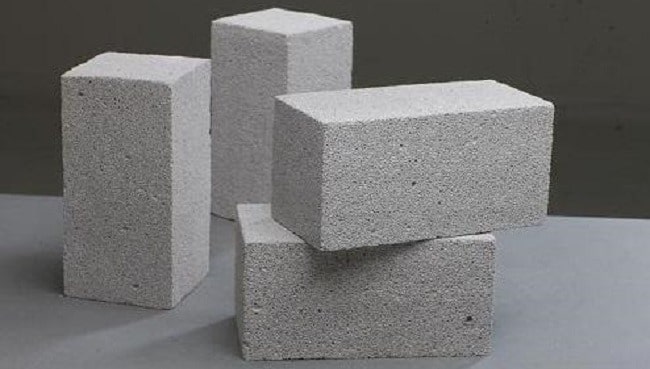 |
|
|
|
Concrete is most important construction materials. In upcoming years there has been an increasing worldwide demand for the construction of buildings, roads and an airfield. In some ruler areas, the huge quantities of aggregate that have already been used means that local materials are no longer available and the deficit has to be made up by importing materials from other place.
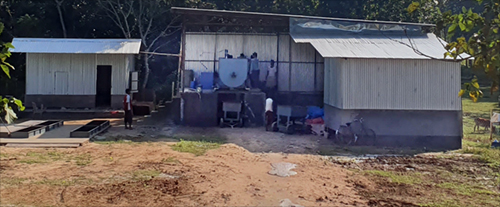
A CLC Unit of
Therefore a new direction towards Cellular Lightweight Concrete in building and civil engineering construction is used. The origin of the CLC is difficult to assess, it would not be an exaggeration to say that its roots are from the ancient period. With the increase in the demand of CLC and the unavailability of the aggregates, technology for producing lightweight aggregates has been developed. Lightweight concrete is the type of concrete which includes an expanding agent in that it increases the volume of the mixture and lessened the dead weight. It is lighter than the conventional concrete.
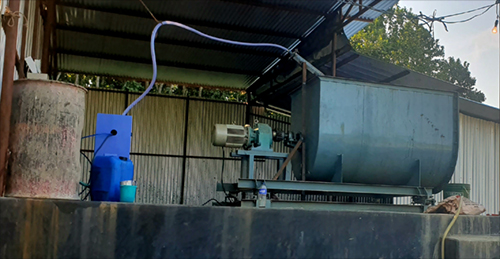
It is produced by initially making slurry of Cement, Fly
Ash, and Water which is further mixed with the addition of
pre-formed stable foam in a blender concrete mixer under
ambient conditions.
The amount of Cement, Fly-Ash, Foam & Water included in the
Light Weight Cellular concrete mix design depends on the
required properties (i.e. strength, thermal conductivity or
durability). Also, depending on the required CLC density and
variance, an appropriate mixed design is selected.
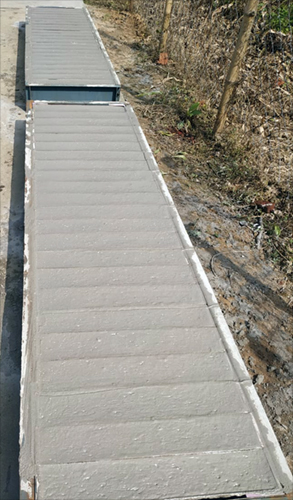
The mixture is either poured into assembled moulds of blocks.
The foam imparts free flowing characteristics to this slurry
due to ball bearing effect of foam bubbles enabling it to
easily flow into all corners and compact by itself in the
moulds without requiring any Kind of vibration or compaction.
Good Curing gives good strength and dimensional stability to
Bricks. Bricks are cured by Water Curing procedure for 14-28 days.
1. Quality parameters with compare to
Clay bricks & AAC Brick.
| Sl. No. | Parameters | Cellular Lightweight Concrete Bricks | Burnt Clay Bricks | AAC Brick |
|---|---|---|---|---|
| 1. | Basic raw materials & other inputs Cement | Cement, Fly Ash & Foaming Compound | Top Soil & Energy | Cement, Sand, High quality Lime, Gypsum, Water, Fly Ash & aluminium as aerating compound |
| 2. | Dry Density Kg/m3 | 750-800 | 1900 | 550-650 |
| 3. | Compressive Strength in kg/cm | 25-30 | 40-75 | 40-45 |
| 4. | Aging | Gains strength with age | No gain in strength with age | Gains strength with age |
| 5. | Thermal Conductivity (W/m.k.) | 0.098 for 400 Kg/m3 0.151 for 700 Kg/m3 0.238 for 1000 Kg/m3 | 0.184 | 0.132-0.151 for 650 Kg/m3 |
| 6. | Sound Insulation | Superior than burnt clay & hollow concrete | Normal | Superior than burnt clay & hollow concrete |
| 7. | Ease of Working | Can be cut, nailed & drilled | Normal | Can be cut, nailed & drilled |
| 8. | Pre-cast elements | Any size of elements | Not feasible | Any size of elements |
| 9. | Water Absorption % by weight | 12% for 800 kg/m3 density (by volume) | 20% by volume | Water absorption is high as compared. |
| 10. | Drying Shrinkage mm/meter | 0.10 | No shrinkage | 0.011 |
| 11. | Productivity | Output 100% more than brick work | Normal | Output 100% more than brick work |
| 12. | Eco Friendliness | Pollution free Least energy requirement can consume fly ash around 33% | Can Creates smoke Uses high energy Wastes agricultural land | Pollution free, High energy requirement, open process uses fly ash or sand lime |
| 13. | Structural saving due to dead weight reduction. | 60% reduction in dead load of wall and 48% in partition. 15% cost saving for high rise buildings as compared. | No additional saving | 55% reduction in weight of walls. Tremendous structural saving for high rise buildings in Earthquake . |
| 14. | Construction Speed | Very high due to bigger size, light weight | Comparatively lower | Very high due to bigger size, light weight |
| 15. | Quality | Uniform and finished edges | Normally varies | Uniformed finished |
| 16. | Delivery | Pre cured and ready for delivery | Seasonal | Pre Cured and ready for delivery |
| 17. | Automation | Available in Full Automatic, Semi Automatic and manual. | Manual | Automated Manufacturing process. |
2. Small write up how a plant can be setup in small scale to large scale.
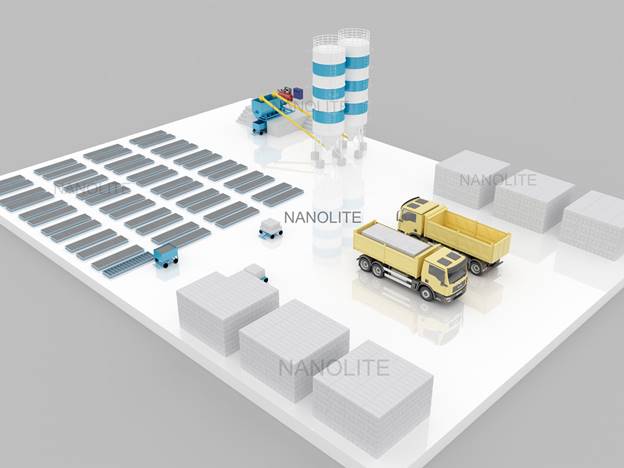
According to the plan CLC plants can be
setup in various capacities from small scale to large scale,
manual to fully automatic, and water curing to automated
vapor curing. Contact us with information about your target
market and financial capability, we will design a plan for
you.
Raw Materials:
| Cement: OPC (53 Grade) | Fly-Ash: Only from Thermal Power Plant |
| Foaming Agent: Protein Based | Water: Soft Water (TDS to be less than 500) |
Plant capacities:
| Plant Capacity | Production Per Shift (8 hours) |
| 15m3 | 1125 units |
| 30m3 | 2250 units |
| 50m3 | 3750 units |
| 75m3 | 5625 units |
| 100m3 | 7500 units |
3. Our Role as consultant:
Our vision is to help entrepreneurs to setup the finest
quality of CLC bricks manufacturing plants. These plants
will help the fast growing construction activities by
providing high quality eco-friendly light weight bricks in a
affordable price. Small plants size will help small and
medium scale entrepreneurs in setting up low cost plants in
small localities targeting small towns and villages and
small plants will be able to provide low cost high quality
brick manufactured in same locality and delivered at the
doorstep of buyers. With increase use of CLC bricks in
replacement of Clay Bricks, young entrepreneurs can setup
CLC plants at a minimum area, investment & effort as we will
provide the necessary details about from project report
preparation to sourcing of machineries to raw materials,
help in construction and guidance in taking certifications
etc.
A easy way to setup a plant at your neighborhood.